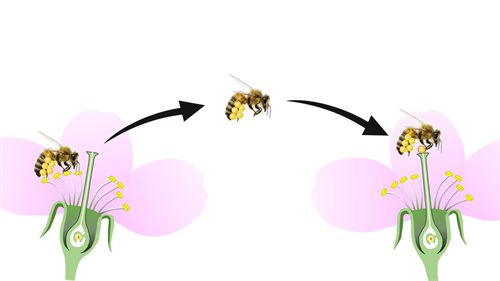PDF chapter test TRY NOW
What is self pollination?
The transfer of pollen grains from the anther to the stigma of the same flower or another flower on the same plant is known as self-pollination.

Self pollination
It is also known as autogamy and is seen in bisexual flowers (that contain both stamens and pistil) like Hibiscus.
Advantages of self pollination:
- In bisexual flowers, self-pollination is possible.
- It does not depend on the agents for pollination.
- Pollen grains are not wasted.
Disadvantages of self-pollination:
- Less number of seeds are produced.
- Due to limited amount of endosperm, seeds produce weak plants.
- New varieties of plants cannot be produced.
Cross pollination:
The transfer of pollen grains from the anthers of a flower to the stigma of a flower on another plant of the same species is known as cross pollination.

Cross pollination
Advantages of cross pollination:
- Cross-pollination results in the formation of new varieties because the seeds produced by cross-pollination develop and germinate properly and grow into better plants.
- Comparatively, more viable seeds are produced.
Disadvantages of cross-pollination:
- There are high chances for pollination failure due to the distance barrier.
- Pollen grains are wasted in high amounts.
- Cross-pollination may result in the generation of unwanted characters.
- It depends on external factors for pollination.
Reference:
https://upload.wikimedia.org/wikipedia/commons/1/14/Self_polination.jpg
https://upload.wikimedia.org/wikipedia/commons/thumb/c/ce/Cross_pollination.png/1024px-Cross_pollination.png
